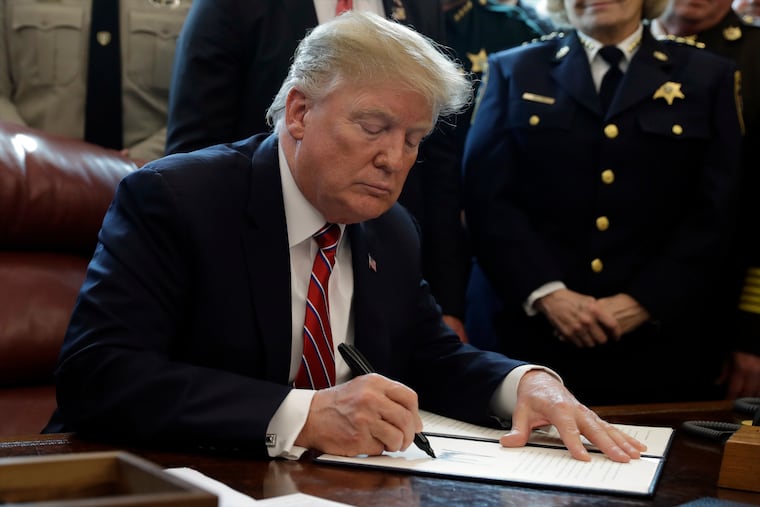Trump declared a national emergency for coronavirus. Here’s what that means.
Under the 1976 National Emergencies Act, the president is empowered to invoke any of more than 120 statutory powers to address a crisis.

President Donald Trump on Friday declared a national emergency to combat the coronavirus, unleashing $50 billion of federal funding to take on the crisis, cutting rules to enable hospitals to expand their capacity to treat people, and promising an expansion of testing as soon as next week.
He said his administration was working with drug companies and retailers to develop drive-through testing locations, with Google developing a website to help people find places to get tested. He also waived interest on federal student loans.
“To unleash the full power of the federal government in this effort, today I am officially declaring a national emergency, two very big words,” Trump said in the Rose Garden. “The action I am taking will open up access to up to $50 billion of, very importantly ... a large amount of money for states and territories or localities in our shared fight against this disease.”
Under the 1976 National Emergencies Act, the president is empowered to invoke any of more than 120 statutory powers to address a crisis, according to the Brennan Center for Justice.
Areas in which emergencies can be declared include public health, natural disasters, the military, land use trade, agriculture, transportation, communications, and criminal law.
In declaring an emergency, the president must identify the powers he seeks to use. Those powers can include mobilizing the military, reallocating resources, including money and people, and suspending certain regulations to address a crisis.
The Stafford Act gives the president the power to grant emergency funds to states that request them.
In declaring a national emergency last year along the U.S.-Mexico border, Trump moved to shift Defense Department funds for use in building a border wall. That order is the subject of numerous court challenges.
One of the powers available in a health emergency allows officials to move quickly to obtain drugs, vaccines, diagnostic tests, and other medical equipment and supplies needed to respond to the crisis without going through normal channels, including testing.
To declare an emergency, the president must sign an executive order spelling out what powers are being invoked and then publish the order in the Federal Register.
President Barack Obama declared the last health emergency, in 2009, to address the H1N1 influenza pandemic.
A declaration expires unless it is renewed annually or terminated by the president or by Congress beforehand. Any joint resolution vote by Congress to terminate an order also must be signed by the president. In the event of a veto, two-thirds of each chamber must vote to override it.
Congress voted to override Trump’s border emergency declaration last September, but he vetoed it.
Until Friday, presidents had issued 64 emergency declarations since 1976, more than half of which remain in effect.
Under the law, the White House and government agencies must maintain records of all orders and regulations related to an emergency declaration, and to regularly report the cost to Congress.
Staff writer Jonathan Tamari contributed to this article.